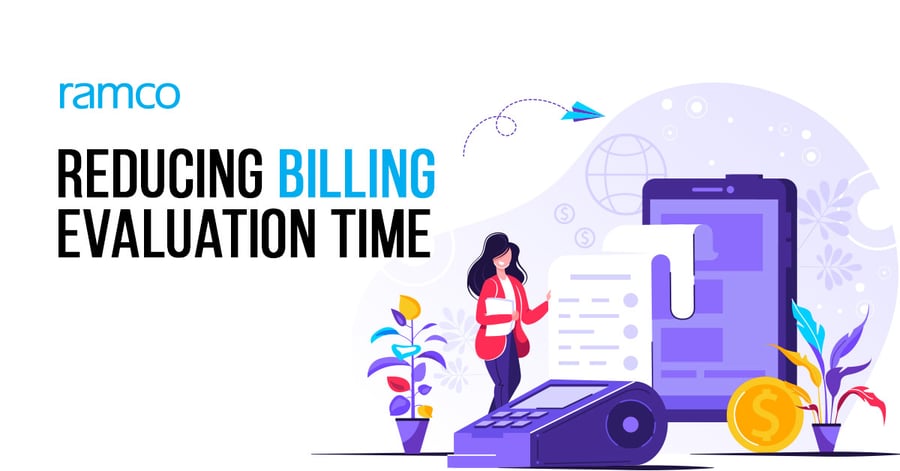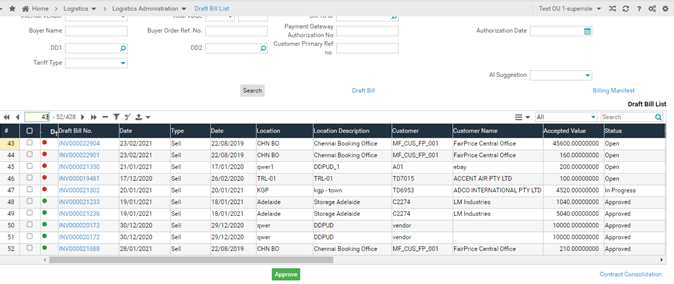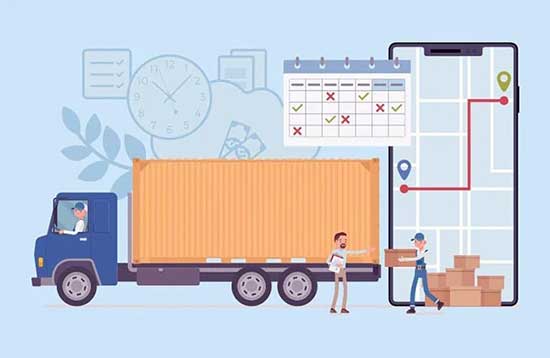
How can Logistics Service Providers Reduce Billing Evaluation Time by 80%?
Published :

A Logistics Service Provider’s billing department helps in maintaining continuous cash flow into the organization. Accuracy and promptness in billing are in fact directly proportional to the revenues realized.
Unfortunately, billing in logistics is not so simple; there are multiple complexities in terms of different charge bases, advance payments, penalty, exceptions, contract clauses and more. When these parameters are combined with a high volume of business, billing involves multiple rounds of evaluation to ensure that an accurate bill is generated for an end customer. An excess or delay in billing would lead to customer dissatisfaction, and a lower billing would burn a hole into the company’s revenue pocket. We mentioned some of these challenges in our last blog.
On a typical day, a mid-sized LSP would need to generate 5000 to 25000 bills. While the billing team would spend ample time in preparing it, the same bills would then be required to be validated for accuracy. Since most of the validation is manual, with the enormous volume and strict service level agreements, errors begin to creep in.
If we could save that evaluation time alone, it would directly result in reduced manual labour, faster billing and quicker payment cycles. The Ramco Logistics platform provides an AI & ML-based anomaly detection feature within its logistics software, which learns from the historical data of draft bills and helps the billing team validate the bills on exception alone.
By leveraging advanced logistics software, Logistics Service Providers can configure the basic rule definitions, variance deviations to enable anomaly detection within their logistics system. Definition of these rules are based on a combination of data from customer/vendors contracts, Tariff IDs, and historic billing information. These rules can be set to auto-approve bills based on certain parameters and manually approve bills in case of a deviation. Once this rule is activated, all the draft bills generated based on specific customer’s contract is auto approved if it meets condition (GREEN in the image below) and bills that need manual intervention are marked separately (AMBER & RED in the image).
Integrating a robust Logistics ERP solution empowers organizations to automate billing validation and anomaly detection, allowing billing teams to concentrate on exceptions instead of manual checks. By configuring tailored rule definitions based on historical data and contractual agreements, LSPs can facilitate the swift generation of accurate bills. This proactive approach minimizes manual effort and can lead to a reduction in billing evaluation time by over 80%. The result is faster billing cycles, enhanced accuracy, and improved cash flow—key factors that solidify an LSP’s competitive edge in a demanding market. Embracing these innovations is crucial for organizations aiming to thrive in today’s logistics landscape.

While validating draft bills, the billing team just need to validate all the RED and AMBER ones which fall outside the recommended parameters.

With the AI&ML engine managing this huge chunk of output, the billing team just needs to focus on the outliers which will reduce more than 80% of evaluation time. In logistics organizations where the volumes and complexities are high, this anomaly detection can help them improve their billing accuracy quicker, thereby instantly influencing the incoming cash flow. Adopting a robust Logistics ERP solution can further streamline these processes, making logistics management more efficient.
Enterprise asset management (EAM) involves the management of mission critical assets of an organization throughout each asset's lifecycle. EAM is used to plan, optimize, execute, and track the needed maintenance activities with the associated priorities, skills, materials, tools, and information. The aim is to optimize the quality and utilization of assets throughout their lifecycle, increase productive uptime and reduce operational costs.
Enterprise asset management (EAM) involves the management of the maintenance of physical assets of an organization throughout each asset's lifecycle. EAM is used to plan, optimize, execute, and track the needed maintenance activities with the associated priorities, skills, materials, tools, and information.
The software helps in effective maintenance of assets through preventive, predictive, shutdown and breakdown maintenance strategies. The system also helps enterprises mitigate equipment risks by enhanced safety standards. The streamlined operations and improved asset performance helps organizations increase their investment effectiveness.
EAM is important because it helps organizations track, assess, manage and optimize asset quality and reliability. Asset intensive Organizations have hundreds, thousands, even millions of assets which needs to be maintained to maximize / optimize life of these assets to increase the return on investment.
The key features of effective EAM are:
Asset Intensive companies under the following Industries :
Contact us for a meeting and schedule a demo
This differs on case to case basis, based on the type of installation and unique industry specific requirements. Contact us for a meeting and schedule a demo.
This differs on case to case basis, based on the type of installation and unique industry specific requirements. Contact us for a meeting and schedule a demo.
Stay Connected, follow us on LinkedIn / Twitter to know more about EAM Software latest trends.

All Rights Reserved. © Copyright 2024. Ramco Systems.